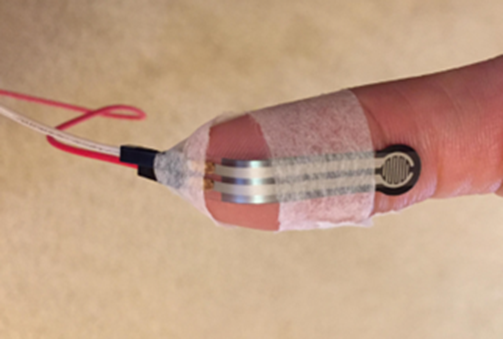Advantages:
- An accurate electronic assessment
- Unbiased
- Gives quantified results
- Leads to more accurate diagnoses
Summary:
The “finger to thumb crease” test is used to assess neurological function, particularly in the cerebellum. Patients are asked to tap the tip of their index finger against the distal crease of the thumb using both their dominant and non-dominant hands. This test is performed in a finite amount of time. Impaired finger tapping can be indicative of CNS demyelinating lesions such as those seen in multiple sclerosis. Typically, this test is performed visually. The physician or medical professional administering the test simply measures how many times he or she believes that the second finger has strayed from the thumb crease. This is very difficult to measure, especially given the rapidity of the test. Further, visual measurements vary between medical professionals, leading to inaccuracies and misdiagnoses.
Our researchers have developed a system and method for a more accurate measurement of the “finger to thumb crease” test. This invention will measure the “finger to thumb crease” electronically, with the patient wearing electronic sensors on the thumb crease to determine the accuracy of the taps. Results will be quantified based on the sensor readings to output an accurate and reliable score. This measurement technique will generate unbiased results as scoring will not vary between physicians. It may also lead to more accurate neurological diagnoses.

A Prototype of the Electronic Device
Desired Partnerships: